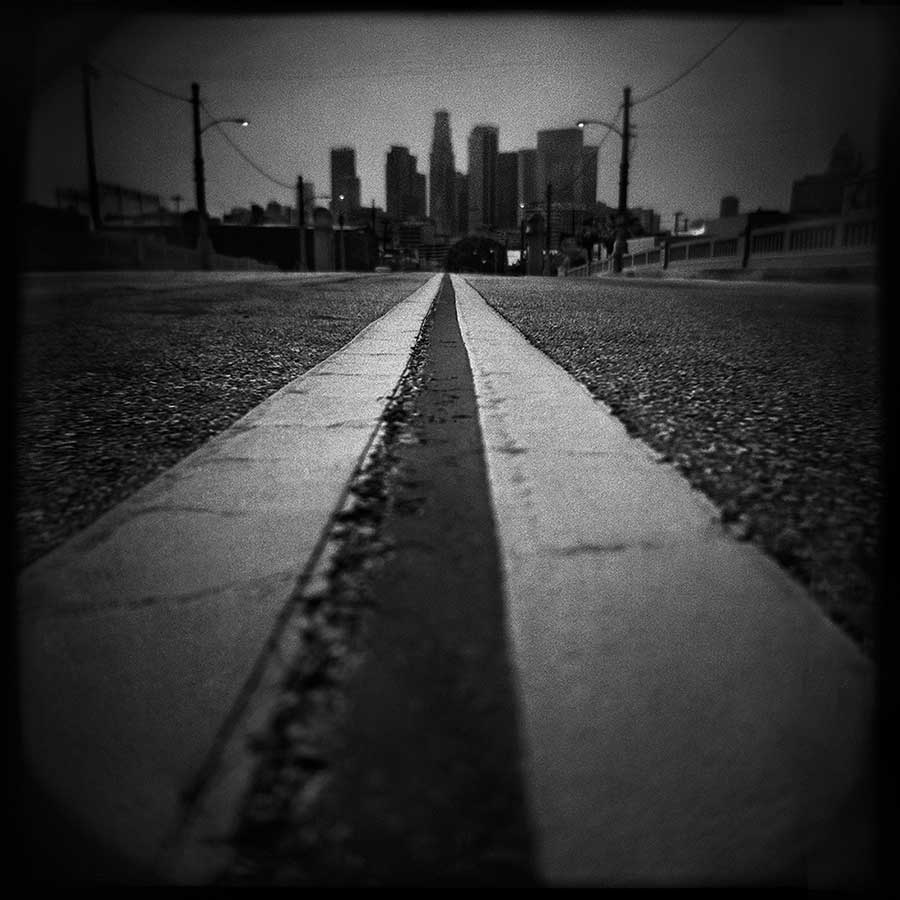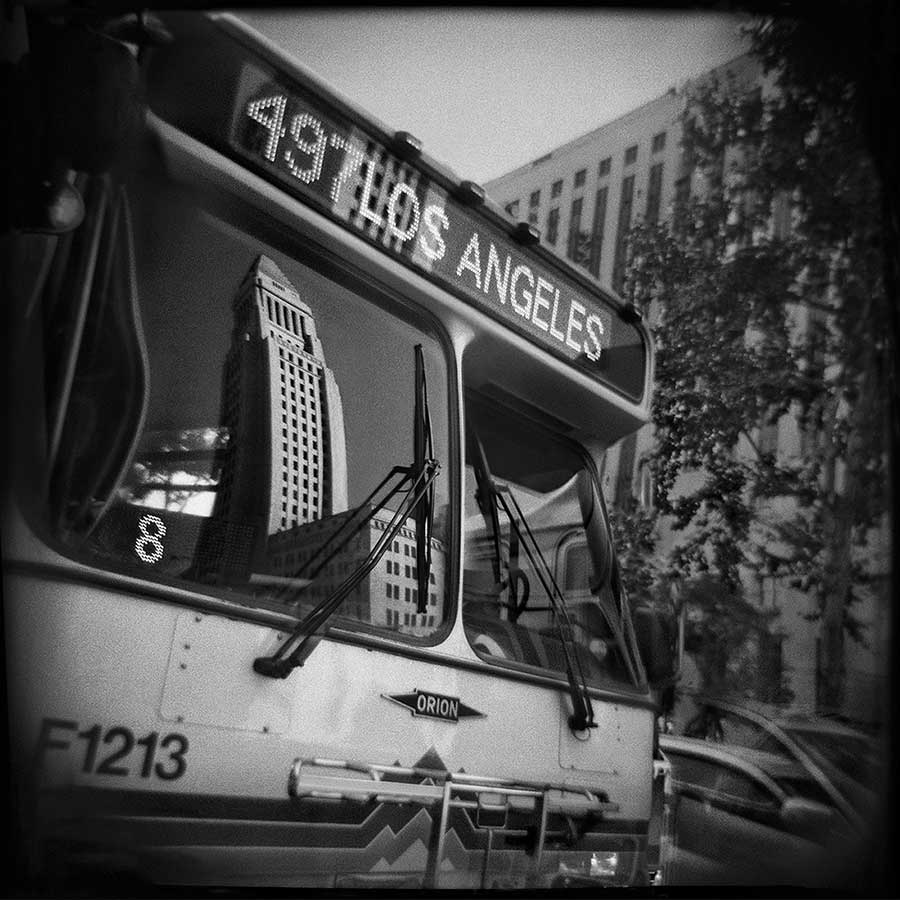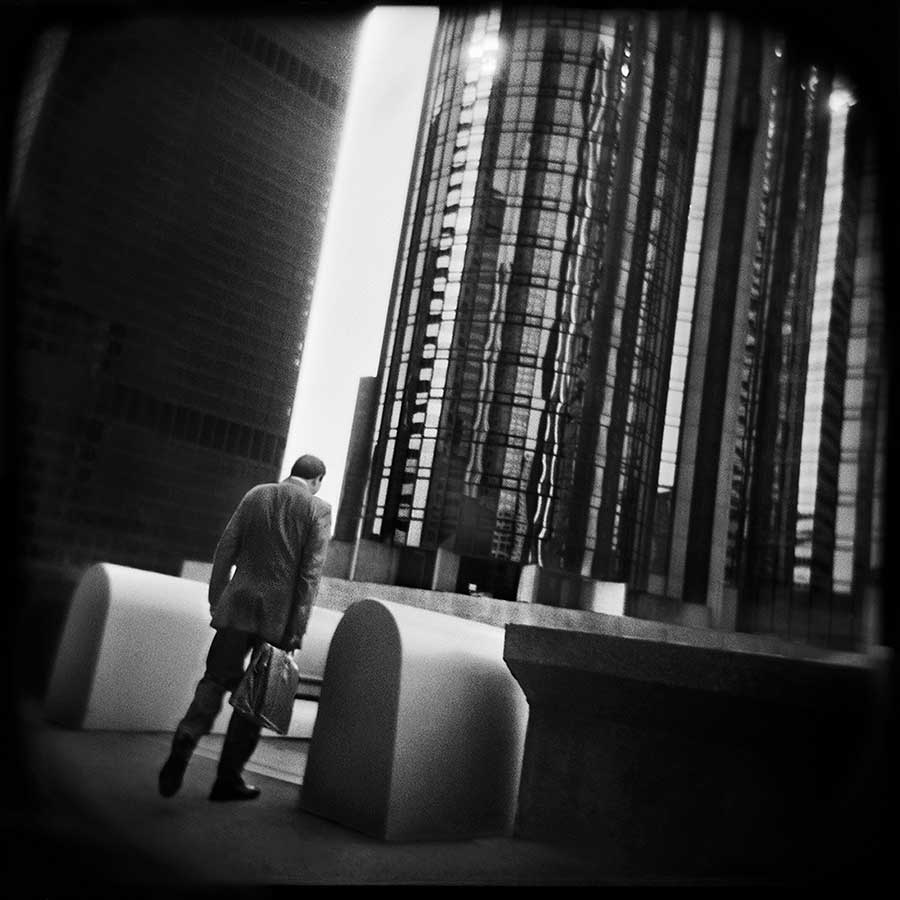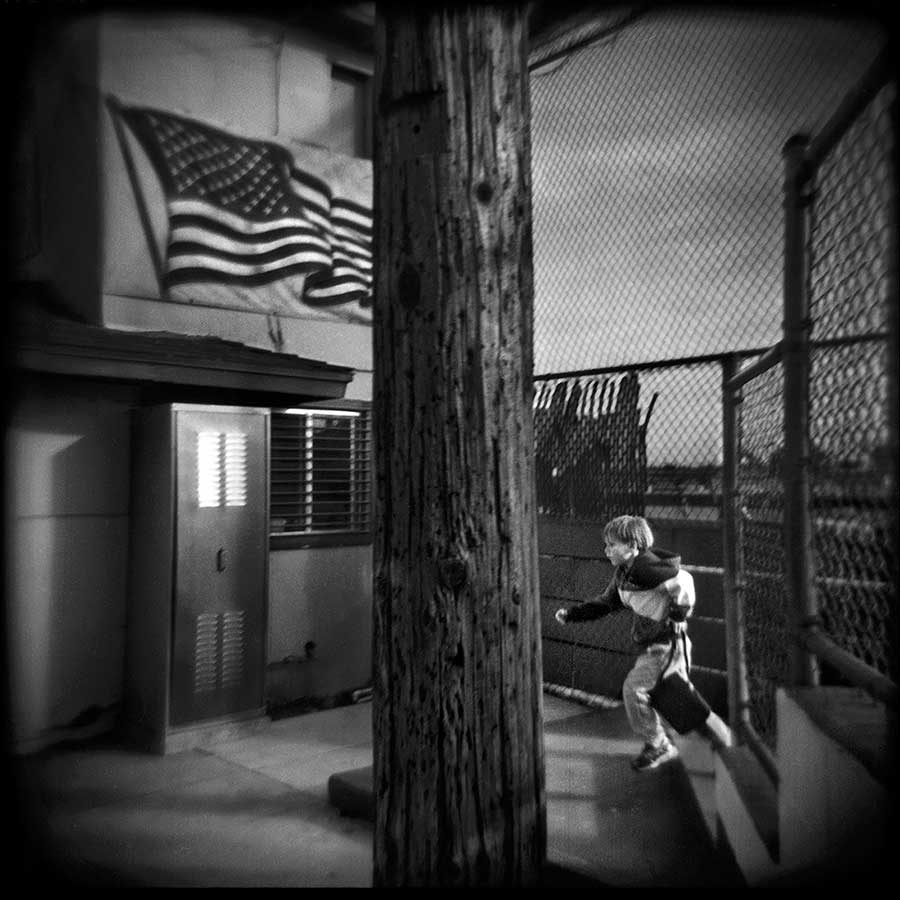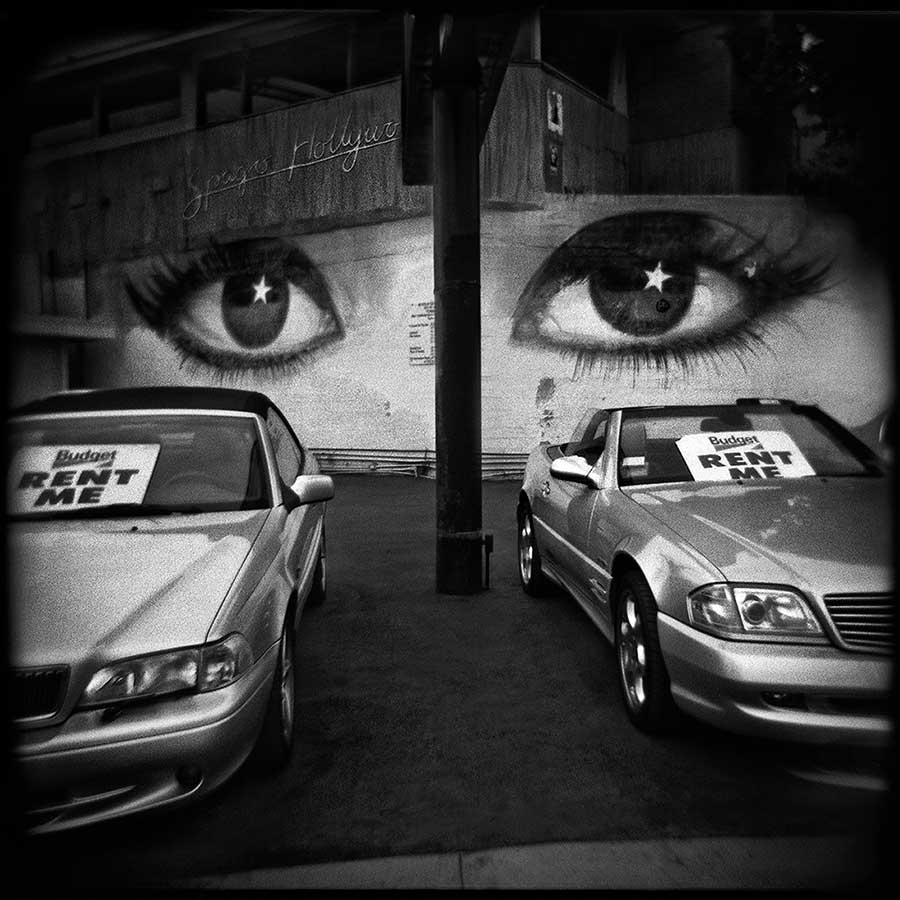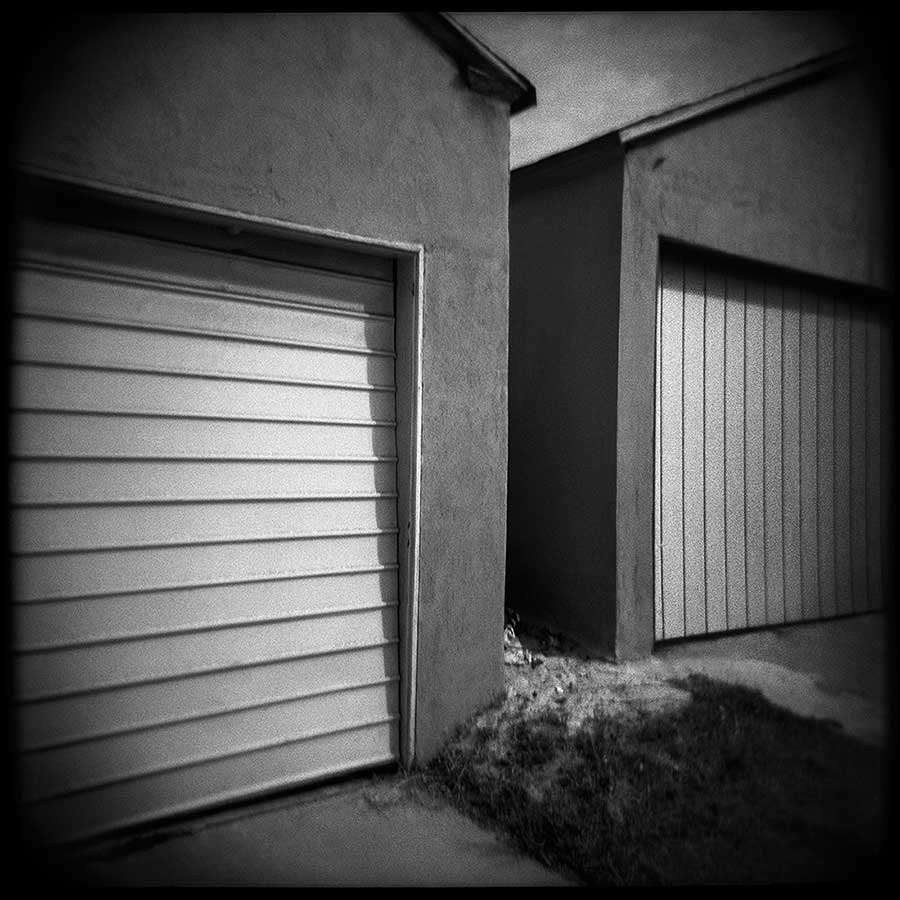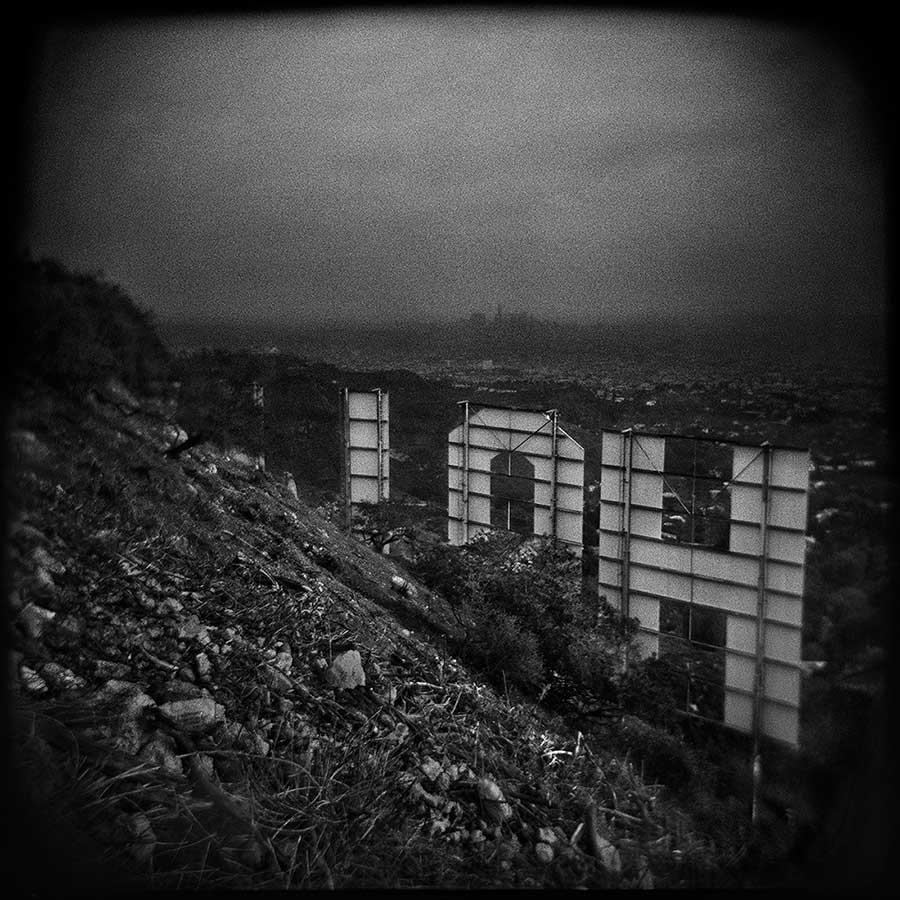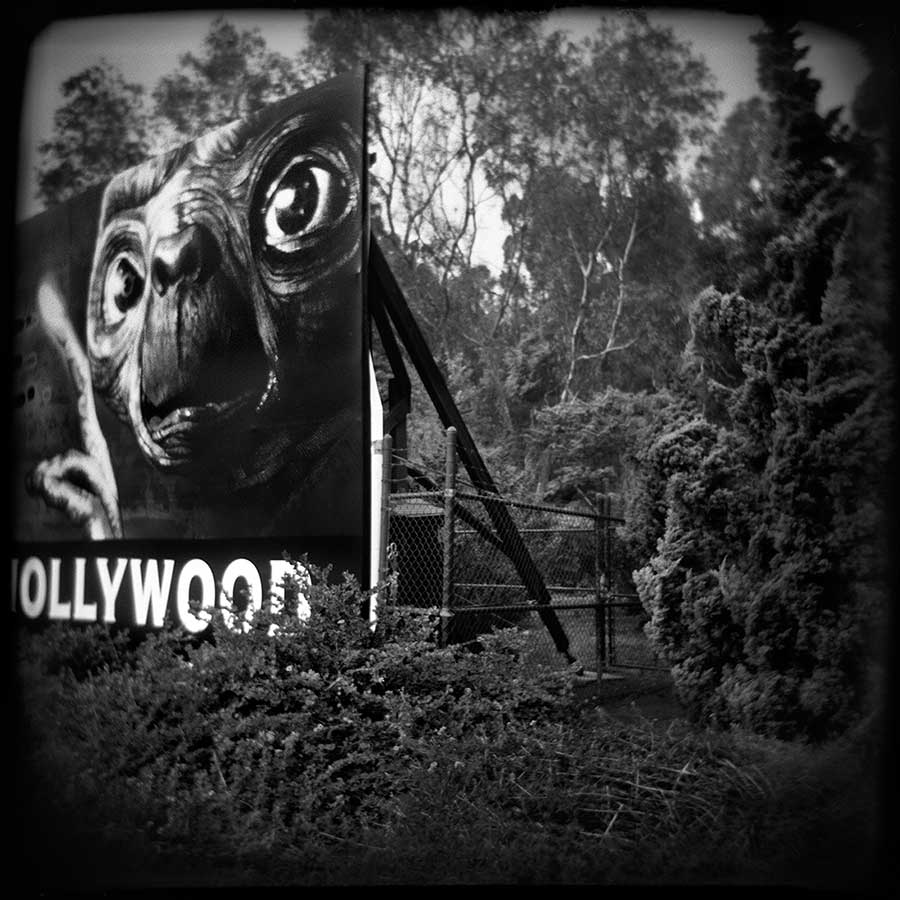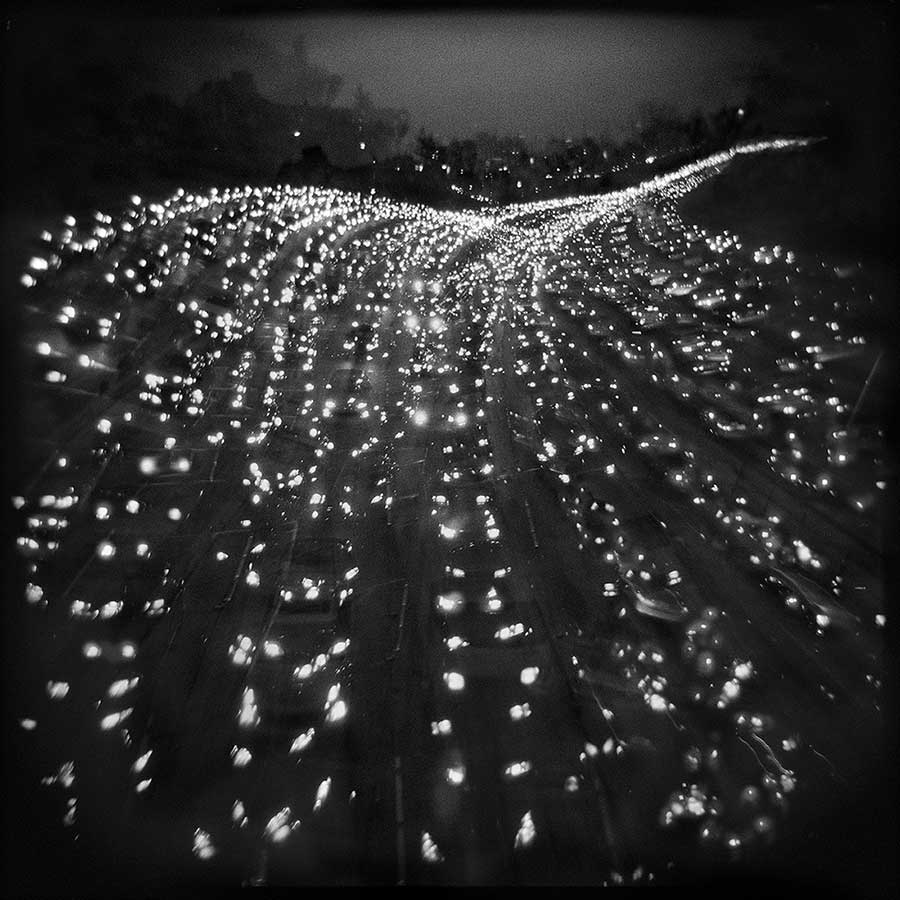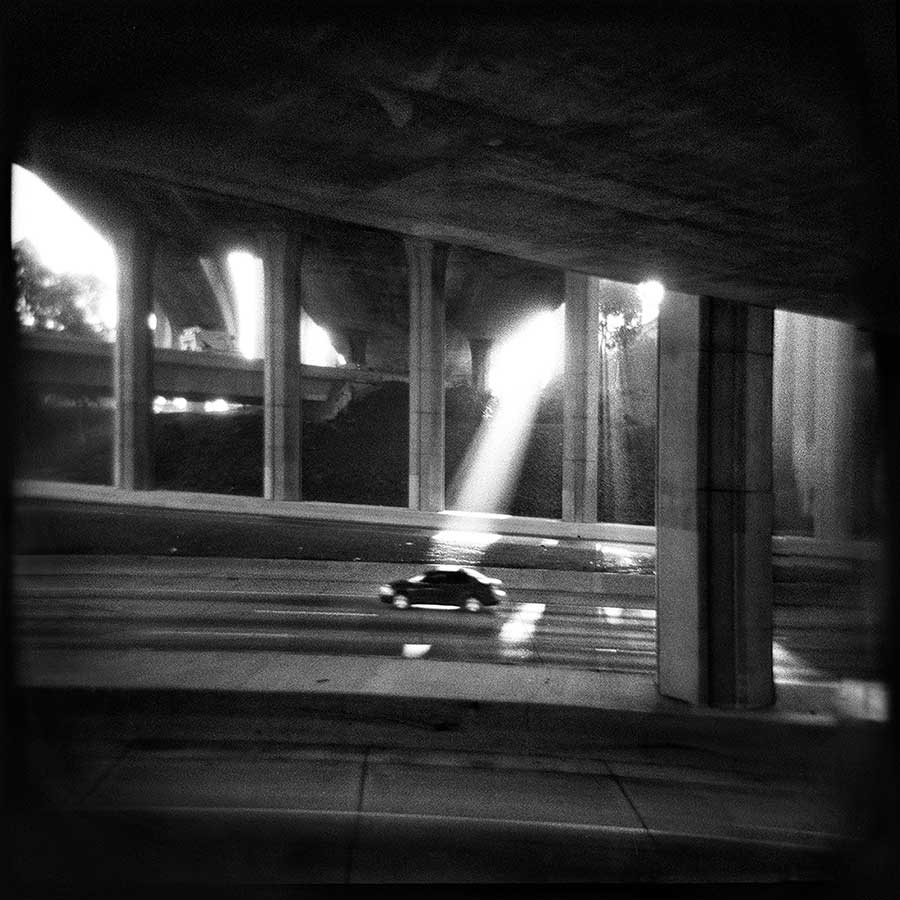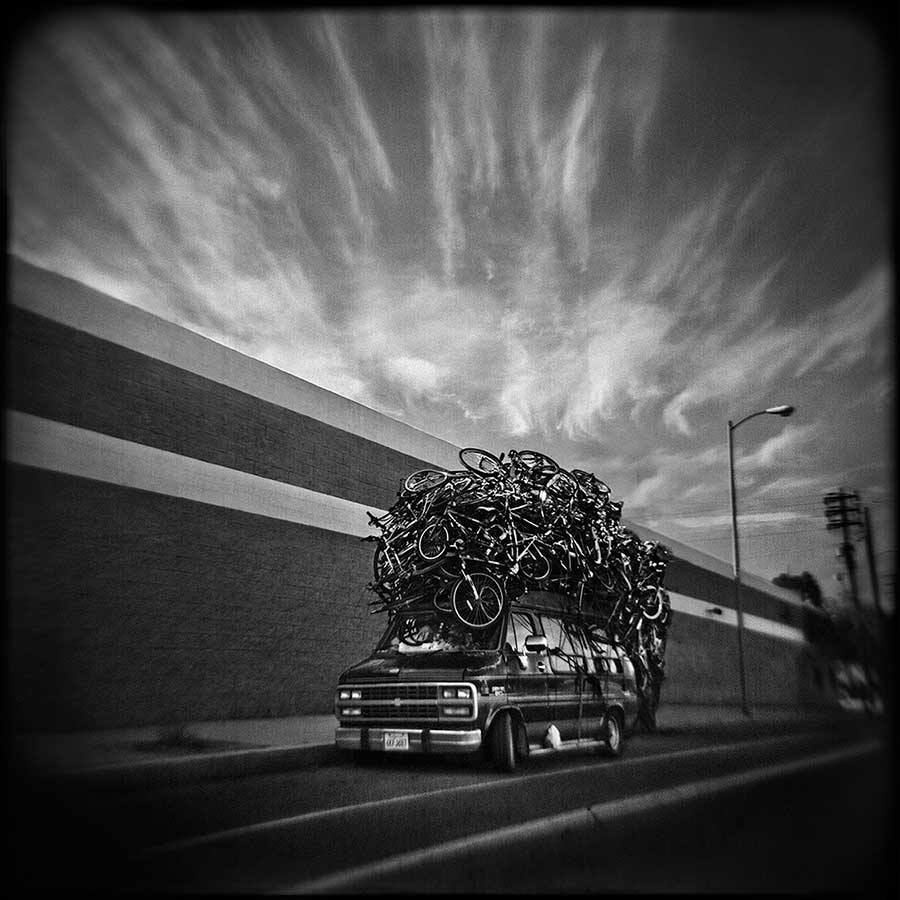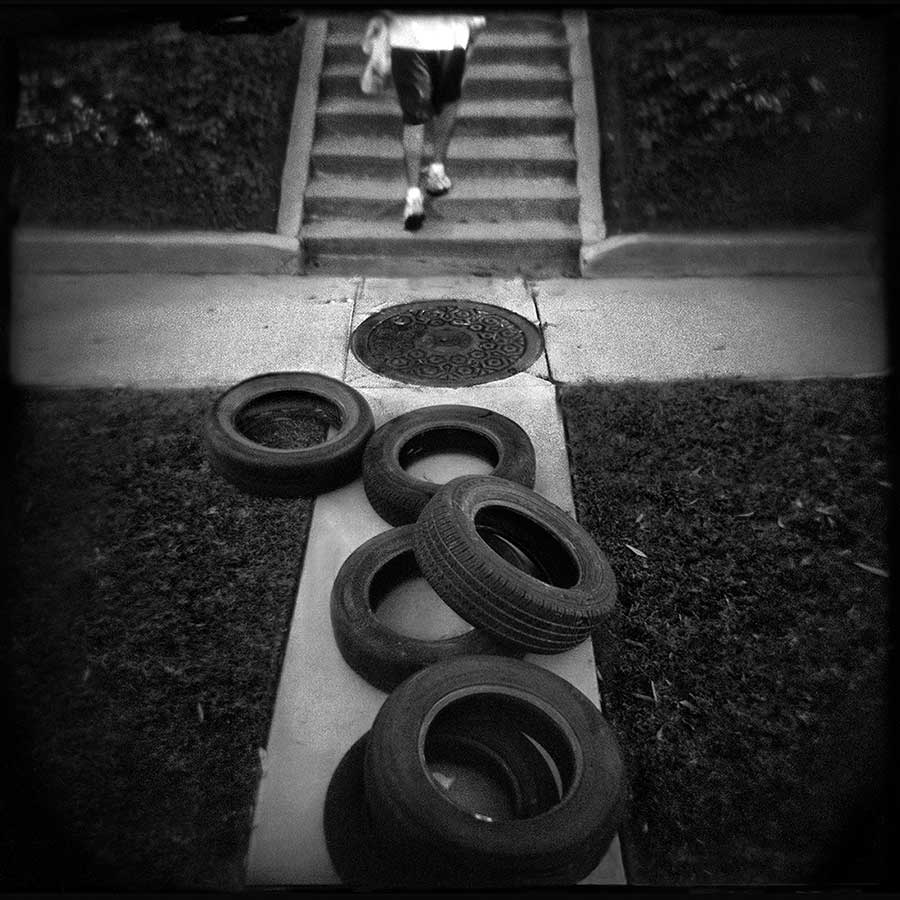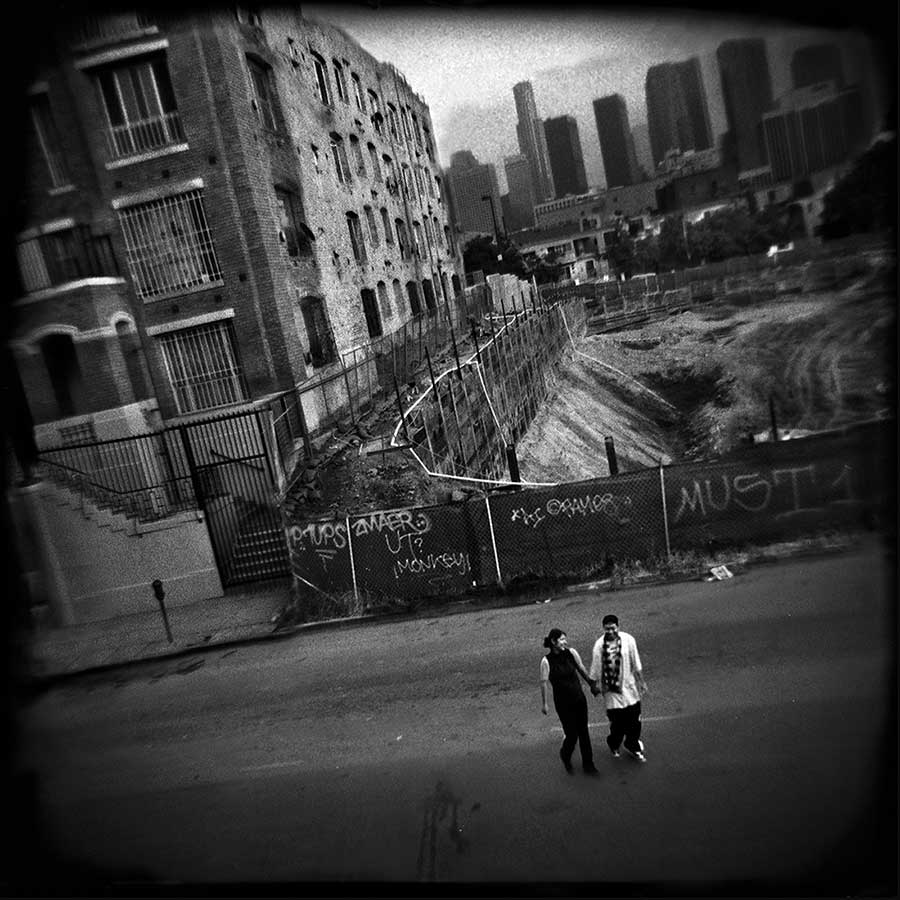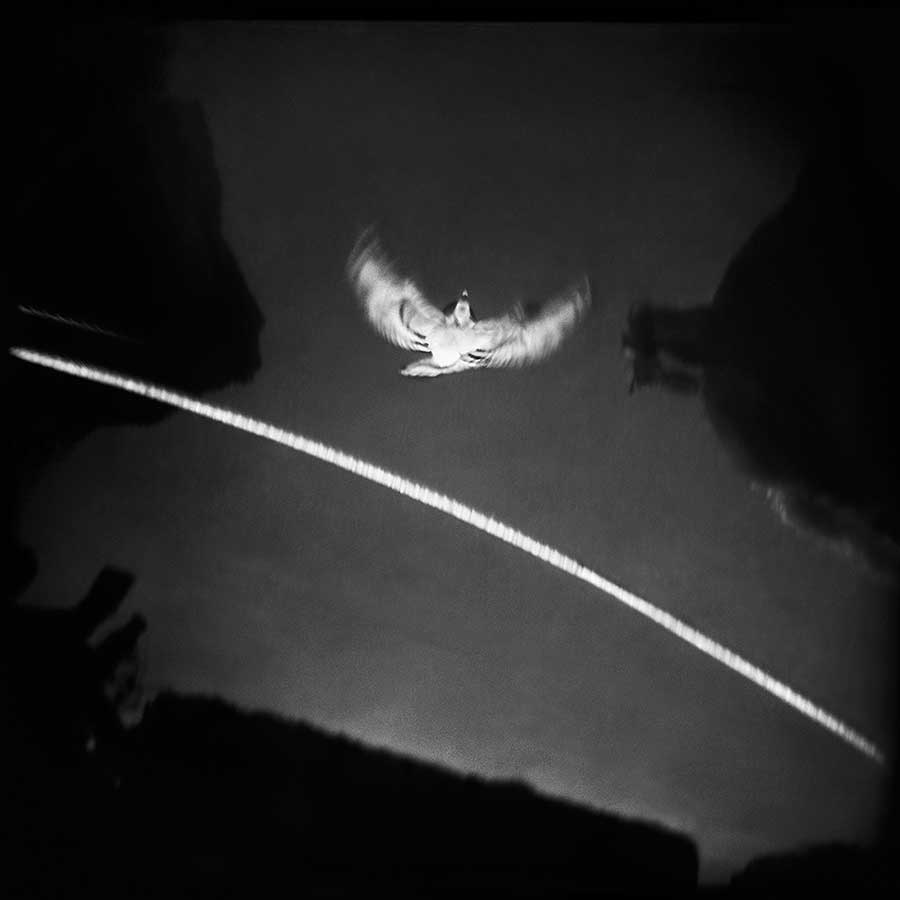Thomas Alleman – I began making “urban landscapes” with a medium-format Holga—a $30 plastic camera—in September of 2001, in the immediate aftermath of the 9/11 terrorist attacks. My heart was shattered then, and my career was momentarily stalled. In that upside-down time, I truly had nothing better to do than walk all day, every day, in Los Angeles’ many strange neighborhoods, shooting with a camera that couldn’t see straight.
The Holga’s many laughable failures are well known and all-encompassing: focus, exposure and parallax are effectively un-controllable, and the plastic lens is always aberrant, cloudy and vignetted. Much to my surprise, however, the freaky results of that technical dysfunction resembled precisely the pictures I’d been dreaming of in those nightmare days.
By obliterating the hyper-detailed, documentary specificity that modern multicoated lenses have made commonplace, the Holga’s bizarre optics have given me access to a realm of richly-textured suggestion, impression and allusion that I couldn’t achieve in my earlier attempts at the lyrical landscape, which now seem banal and psychologically barren by comparison.
As I’ve wandered LA’s wide, weird precincts, I’ve been concerned with certain crucial questions: What does it truly look like here, and why don’t the pictures that we show the world resemble the City I walk in every day? What is the meaning or value of history and authenticity in this transient environment, and what does the “authenticity” we fabricate say about us? What are the hidden codes and messages that are borne in the architecture and arrangement of the built environment? Finally, and above all else: what is my personal, alternate vision of the hackneyed local mythos?
I believe this body of work begins to address all those questions, and answers the last one with some conviction: this book of photographs, using techniques under-explored elsewhere, is a cast-eyed and meandering tone-poem about public space in the last Great American City. [Official Website]



